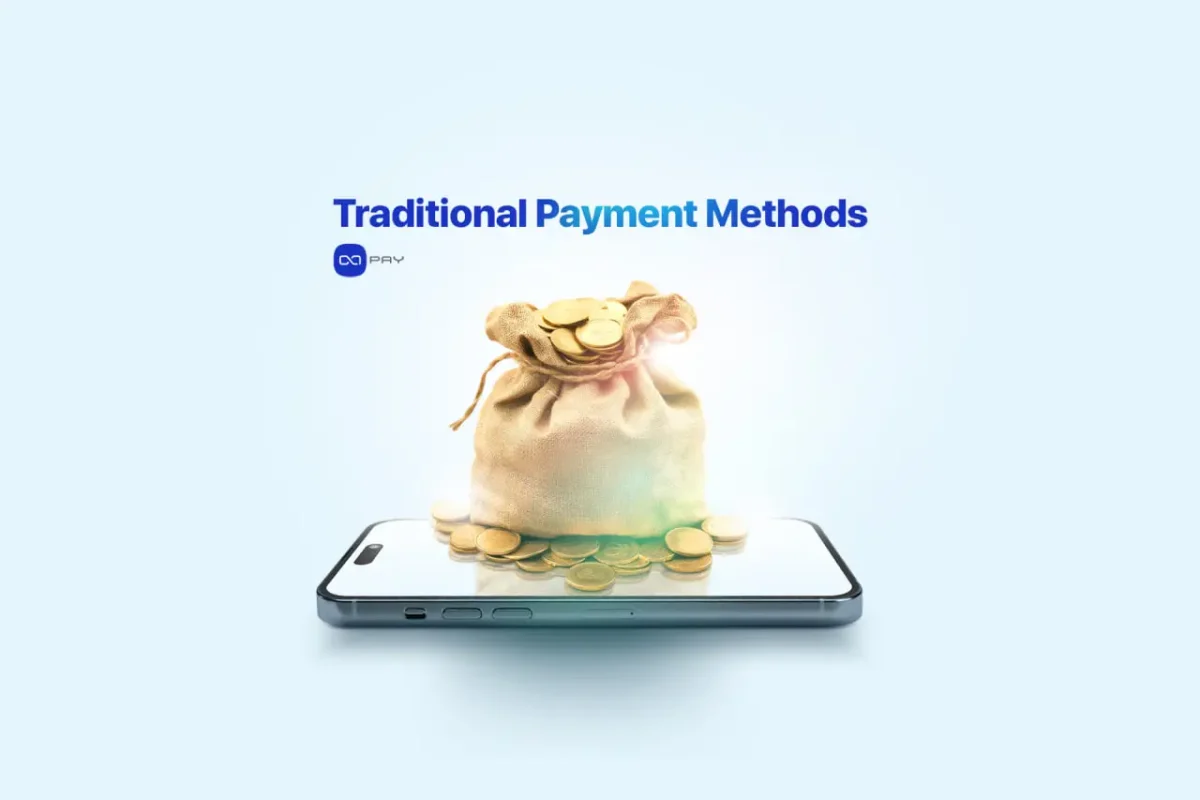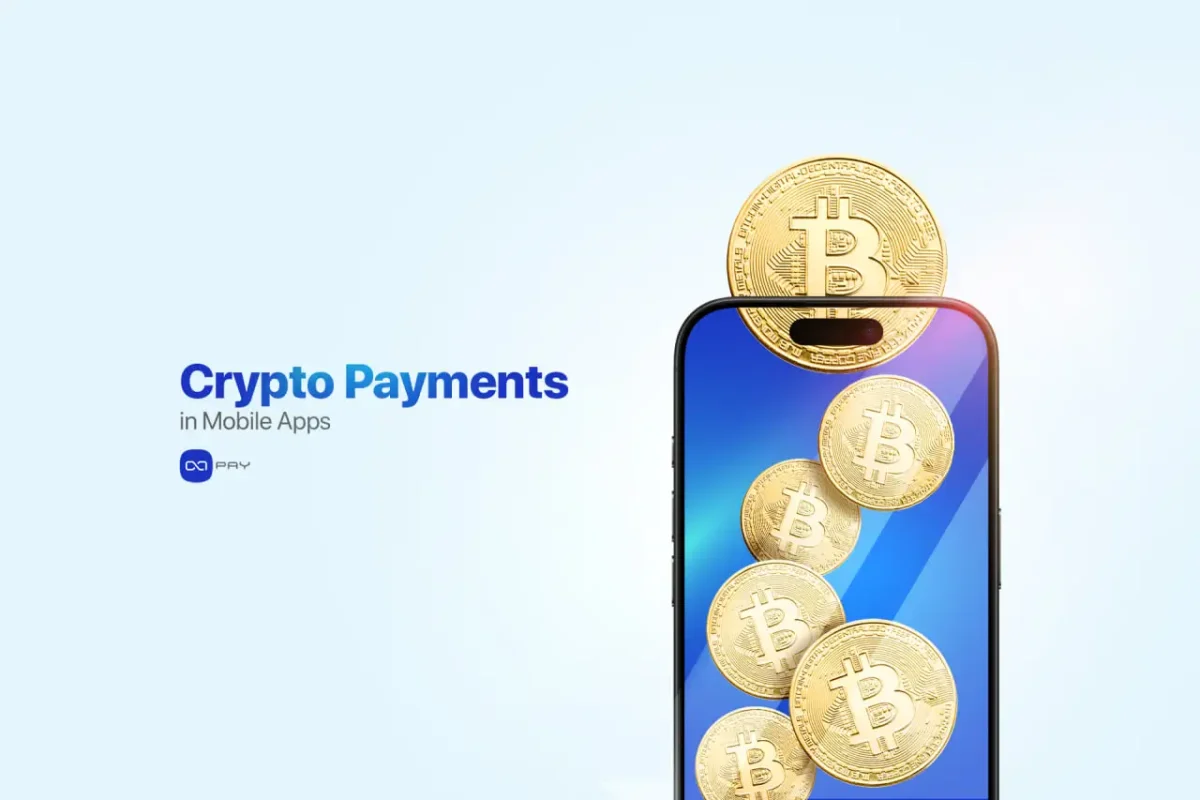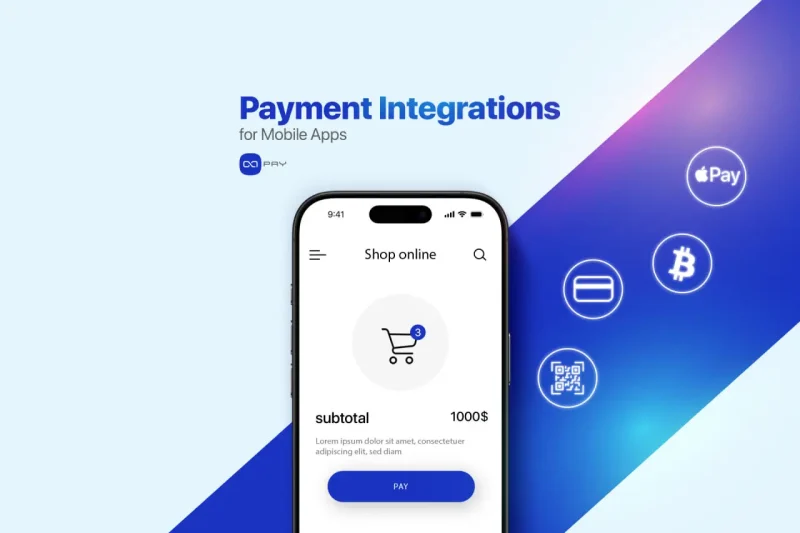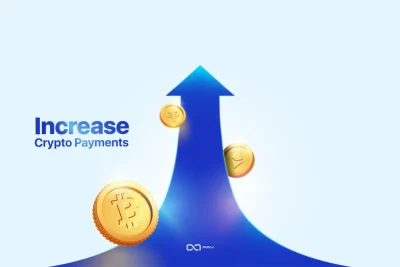2024 年,移动支付交易额预计将超过 1 万亿至 5 万亿美元,但由于集成不佳或选项有限,仍有数百万笔交易失败。对于开发者和产品负责人而言,支付并非后端细节,而是用户体验的核心组成部分。本文将介绍如何正确处理支付,以及为何要使用加密货币。 OxaPay 正在成为一种强有力的替代方案。.
移动应用中的常见支付模式
在选择如何为移动应用集成支付功能之前,了解开发者和企业常用的模式非常重要:
- 一次性付款: 用于购买产品、下载高级功能或解锁内容。.
- 应用内购买 (IAP): 由苹果或谷歌管理的数字商品(如游戏道具、金币等)。.
- 订阅: 持续付费以继续访问内容或功能。.
- 捐款: 在非营利组织或面向创作者的应用程序中很常见。.
- 外部结账: 将用户重定向到外部网站或支付页面。.
每种模式都有不同的集成需求。例如,苹果对在 iOS 应用内销售的数字商品有着严格的规定,要求使用其应用内支付系统。而实体商品则可以使用外部支付网关。.
经核实的行业洞察和数据
为了加强关于移动支付整合的决策,让我们参考一些经过验证的行业研究:
- Statista(2024) 报告显示,全球移动支付交易量超过 $6.3万亿, 这表明无缝集成变得多么重要。.
👉 来源: Statista – 全球移动支付 - 杜松研究 据估计,到2026年,, 54% 占所有电子商务交易的 54% 付款将通过移动钱包完成。.
👉 来源: Juniper Research – 数字钱包增长 - 贝玛德研究所(2023) 研究发现,全球平均在线购物车放弃率约为 70%, 强调支付摩擦如何直接影响转化率。.
👉 来源: Baymard – 购物车放弃率统计数据 - 万事达卡(2023 年调查) 透露超过 40% 消费者, 尤其是 Z 世代,他们对使用加密货币或稳定币进行应用程序支付很感兴趣。.
👉 来源: 万事达卡——消费者对加密货币的需求
这些数据证明,优化传统支付和加密货币支付体验会直接影响用户留存率和收入。.

传统支付方式
大多数应用程序最初都是通过传统系统集成移动支付功能的。以下是最常见的几种方式:
- 信用卡和借记卡: 通过网关 条纹, 布伦特里或 阿迪恩. 这些功能允许直接在应用程序内输入银行卡信息(如果符合 PCI-DSS 标准)。.
- 数字钱包: 苹果支付, 谷歌支付和 Samsung Pay 使用已保存的凭证提供快速、安全的结账服务。.
- 银行转账或二维码: 更多地用于特定地区(例如,, 印度的UPI 或 新加坡的PayNow).
每种支付方式都提供相应的软件开发工具包 (SDK) 或应用程序接口 (API),以简化集成过程。例如,Stripe 为 iOS 和 Android 提供移动 SDK,并附有简单的代码示例,用于发起和验证支付。.
移动支付集成的关键步骤
具体流程可能因平台而异,但一般步骤如下:
步骤 1:选择网关
根据以下条件选择一个或多个服务提供商:
- 支持的国家
- 支持的货币
- 费用和支付速度
- 易于集成
第二步:创建商户账户
通过支付网关注册并验证您的身份。大多数服务商需要您提供企业信息、银行信息和验证文件。.
步骤 3:添加 SDK 或 API
安装移动 SDK 或通过后端服务器连接到 API。根据您的需求,您可以:
- 让网关处理用户界面(插入式元素)
- 构建自定义界面并使用后端令牌来增强安全性
第四步:处理安全问题
确保您的支付过程安全:
- 所有流量均使用 HTTPS
- 使用令牌化技术避免存储卡片数据
- 后端身份验证用于验证付款
第五步:测试并上线
使用沙盒环境模拟支付,然后在系统准备就绪后切换到正式密钥。.
传统系统面临的挑战
虽然传统支付网关可靠,但它们仍然会给有效的移动支付集成带来障碍。常见的挑战包括:
- 高额费用 (尤其适用于跨境交易)
- 访问受限 在某些国家或没有银行服务的地区
- 结算延迟
- 严格的合规要求
这些问题促使一些应用程序,尤其是全球性或金融科技平台,去探索加密货币支付等替代解决方案。.

移动应用中的加密货币支付:新的机遇
加密货币提供了一种快速、无国界且低成本的支付方式。对于面向全球用户的移动应用而言,加密货币支付可以:
- 取消银行中介机构
- 降低交易成本
- 允许用户使用稳定币支付,降低波动性
- 即时生效,是数字服务和订阅的理想之选
应用用例:
- 全球SaaS平台提供高级套餐
- 自由职业或零工应用程序向劳动者支付报酬
- 支持点对点支付的数字市场
- 提供链上奖励的游戏或NFT平台
然而,将加密货币集成到应用程序中并非像添加钱包地址那么简单。成功的移动支付集成需要完善的发票系统、实时跟踪、错误处理和用户友好的界面。这就是像 这样的工具发挥作用的地方。 OxaPay 进来。.
使用 OxaPay 集成加密货币支付
OxaPay 加密网关 是一个 无需 KYC 的加密货币支付网关 这使得移动应用能够轻松、安全、可靠地接受加密货币。对于希望面向全球用户且不想受制于银行监管的应用来说,这堪称理想之选。.
以下是 OxaPay 如何简化加密货币集成:
✅ OxaPay提供的服务:
- 无需KYC认证: 发送或接收付款无需用户验证。
- 广泛的币种支持: BTC、ETH、USDT(TRC-20、ERC-20、BEP20)、SOL、DOGE、MATIC 等等
- 快速交易: 内部兑换或转换可实现近乎即时的确认,且不收取区块链手续费。
- 轻松集成: 用于后端的 REST API,或在 WebView 或浏览器中运行的基于重定向的支付链接
- 高级功能: 欠费保障、回拨网址和灵活的账单规则
如需了解完整的技术细节,请访问 OxaPay API 文档.
OxaPay 与其他解决方案的比较
虽然存在多种加密货币支付网关,但它们的实现方式各不相同:
- 现在付款支持 300 多种加密货币,但大型商户需要进行 KYC 认证。结算时间可能有所不同。.
- 硬币门在欧洲很受欢迎,但小额交易的手续费可能较高(高达 1%)。.
- 比特支付:在美国拥有强大的影响力,但商家必须遵守严格的验证和银行账户要求。.
OxaPay 它之所以脱颖而出,是因为它直接解决了移动应用在集成支付功能时面临的挑战:
- 便于开发者使用的集成:一个轻量级的 REST API 和即用型支付链接,可在 WebView 或移动浏览器中无缝运行。.
- 减少跌倒内置的少付保护和多种支付方式确保用户不会因为小错误而放弃购买。.
- 规模化成本效益高交易手续费低至 0.4%,这使得处理大额微交易或全球用户的应用程序能够持续运营。.
- 利用稳定币实现全球覆盖支持 USDT、USDC 和其他稳定币有助于移动优先企业提供跨境可预测定价。.
- 实时体验回调 URL 和即时确认功能使应用程序能够立即解锁内容或服务。.
这使得 OxaPay 对那些希望在提供流畅支付体验的同时扩大收入规模的全球移动优先型企业来说尤其具有吸引力。对于开发者而言,它确保了更顺畅的移动支付集成,兼顾了灵活性、低成本和可靠的用户体验。.
使用 OxaPay 开发移动应用的步骤
步骤 1:生成您的 API 密钥
在 oxapay.com 注册并生成您的 商户 API 密钥. 此密钥用于验证您的应用程序的支付请求。.
步骤 2:通过 API 创建付款发票
从您的服务器调用 创建发票 API.
- 必填项:商户(API密钥)、金额
- 可选参数:货币、回调 URL、返回 URL、描述等。.
- 您将在响应中收到 payLink 和 trackId。.
步骤三:在应用程序中打开支付链接
使用应用内浏览器或 WebView 打开支付链接。用户选择支付币种并发送付款。.
第四步:监控付款情况
你可以选择:
- 使用 回调网址 这样,您的后端就能收到实时状态更新(已付款、付款不足、已过期),或者
- 使用 trackId 调用跟踪 API 手动获取状态。.
步骤 5:在应用程序中处理结果
付款完成后,您可以:
- 使用 returnUrl 重定向用户
- 解锁高级功能或内容
- 显示付款成功/失败消息
步骤 6:确保流程顺畅
- 请确保您的 API 密钥永远不会在应用程序代码中暴露。
- 使用后端代理创建发票
- 证实 webhook 有效载荷 使用曲目 ID
移动应用支付用户体验技巧
用户信任源于清晰透明。流畅的移动支付集成应引导用户逐步完成操作,并减少跨设备操作的摩擦。无论使用银行卡还是加密货币:
- 清晰列明总成本: 避免隐藏费用等意外情况
- 添加进度反馈: 让用户知道付款正在处理中
- 提供重试选项: 如果失败了,就给第二次机会。
- 保持一致性: 将支付流程与应用程序设计相匹配
- 支持移动浏览器: 测试外部页面(例如)的响应速度。 OxaPay支付链接)
最后提示:合并多种支付方式
对于大多数应用来说,混合方法效果最佳。建议:
- 银行卡和 Apple/Google Pay 对于熟悉的用户
- 通过 OxaPay 使用加密货币 适用于国际用户或没有银行账户的用户
- 本地方法 根据用户所在地区而定
这可以扩大您的覆盖范围,减少支付失败,并提高整体收入。.
利用分析工具追踪用户偏好的支付方式。监控支付流程中的流失情况,并根据真实数据优化用户界面/用户体验。.
结论:智能支付集成助力打造更优质的应用
移动支付集成并非后端的一个可选项;它是一项核心用户体验决策,影响着信任度、转化率和用户终身价值。将用户熟悉的支付方式(银行卡、Apple Pay/Google Pay)与加密货币相结合,通过…… OxaPay 加密货币支付 让移动应用触达全球用户,减少摩擦,并保持成本可预测。实施清晰的定价、实时状态和安全的 Webhook,然后衡量用户流失情况并进行迭代。借助合适的组合和工具,您将能够提供可扩展、合规且无国界收入增长的支付解决方案。.




